Dhaka’s hidden gem: The gamcha market of Shyamoli
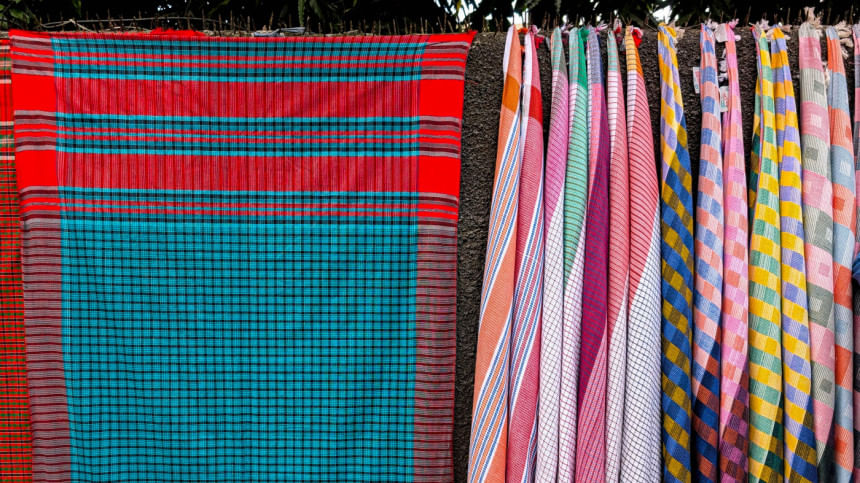
On the busy road of Shyamoli, something unexpected at the roadside catches the eye: rows of colourful gamchas hanging like paintings on the walls. Their vibrant striped patterns ripple gently in the air, as if the city itself is breathing in colours again. In a city where pollution and concrete dominate, this small gamcha market sparkles like a living canvas, bringing not only beauty but also raw tradition back into Dhaka's heart.
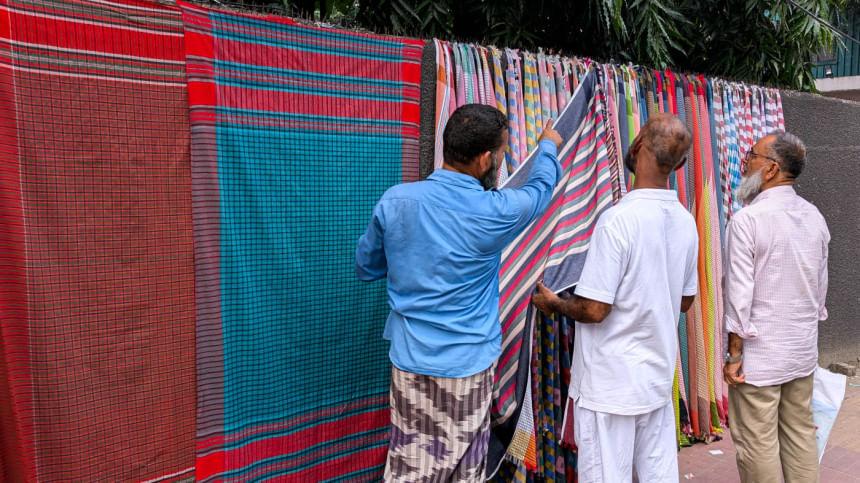
The gamcha is one of the oldest and simplest cultural symbols of our country. Light, practical, and deeply rooted in rural life, it is more than just a piece of cloth. Farmers tie it around their heads under the sun, rickshaw pullers wipe sweat with it, and at home, it serves as a multipurpose cloth. It carries the story of the village into the city, and the perfect location to witness this is in the Shyamoli gamcha market.
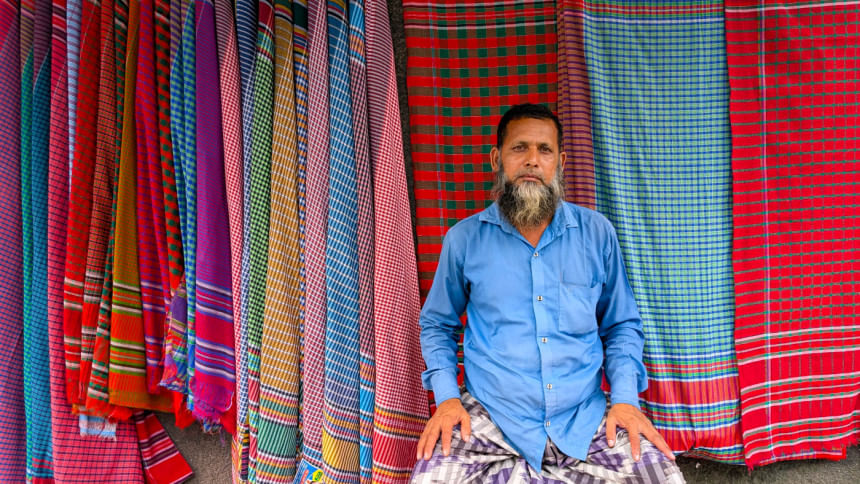
The market usually opens around 10 AM and closes by 10 or 11 PM. Every Saturday, vans arrive carrying fresh bundles of gamchas, most from Sirajganj, with some from Narsingdi and Kumarkhali in Kushtia. Everything here is made of cotton, with three to four different types of gamchas on display. Prices are as simple as the gamchas themselves: a basic cotton gamcha can cost as little as Tk 30, while larger, better-finished ones can go up to Tk 200. Towels, mostly sourced from Kumarkhali and known to sellers as tawal gamcha or towailla, are sold for around Tk 150.
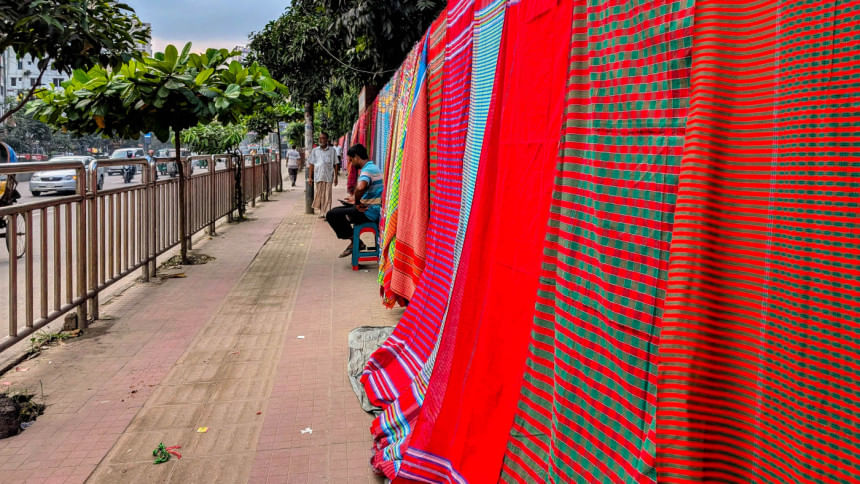
Behind the rows of gamchas are the men who keep this tradition alive. Md Rafiqul Islam, now 55, has been selling gamchas for over a decade. "It has been 10 to 12 years since I started here," he says, sitting and waiting for customers. Alongside gamchas, he also sells lungis brought in from Kushtia, priced between Tk 250 and Tk 300, depending on the design.
Another seller, Md Shahadat Hossain, was busy showing gamchas to a customer. His shop was beautifully decorated to attract passers-by. He explains how production has changed: "Before, everything was handmade. In a whole day, only four or five gamchas could be made. Now, with machines, one person can produce 50 to 60 a day."
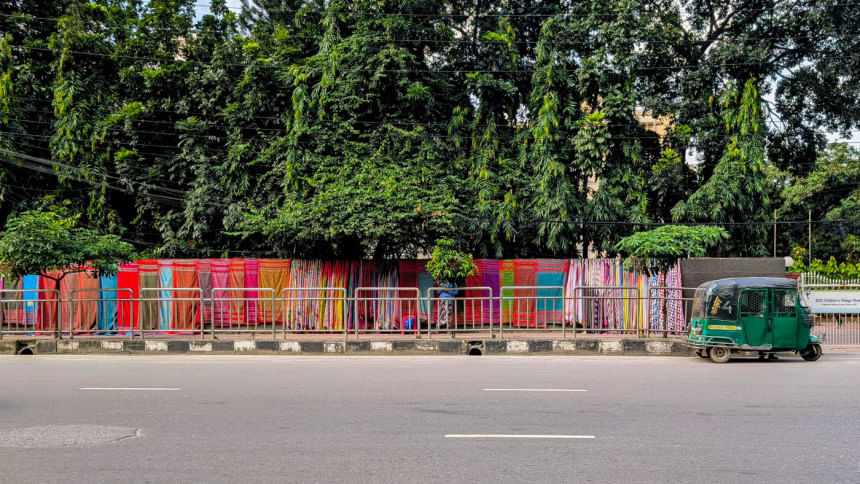
The history of this market also tells a story of persistence. Momrez Ali, one of the original sellers, recalls starting his shop back in 2002. "At that time, there were only two shops here," he shares. Today, there are around 12 shops on the roadsides of Shyamoli. What started as a small effort has now grown into a recognisable spot for anyone seeking gamchas at wholesale prices.
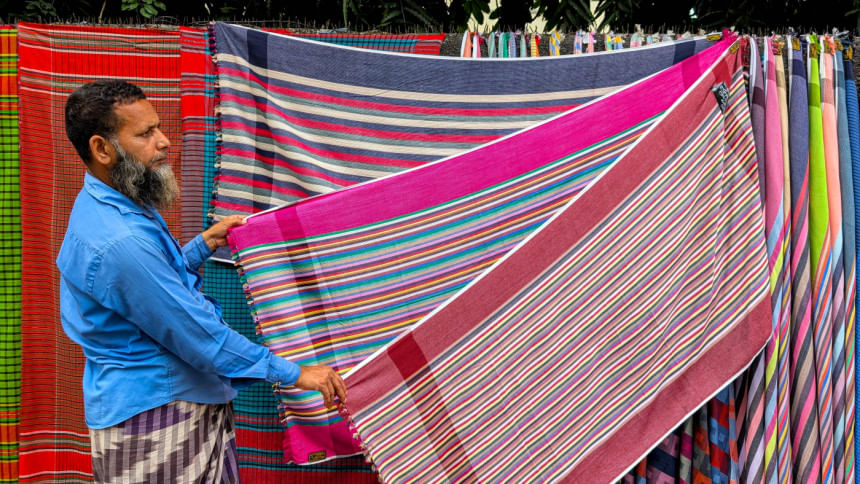
Among the sellers is Md Salahuddin, whose stall stands beside Bangladesh Specialized Hospital in Shyamoli. His roots in the trade go even deeper. "My father and grandfather were both gamcha makers in Chapainawabganj. Eventually, I learned the craft too," he shares. "But these days, we only sell after collecting from the vendors." The family legacy continues through his shop here in Dhaka.
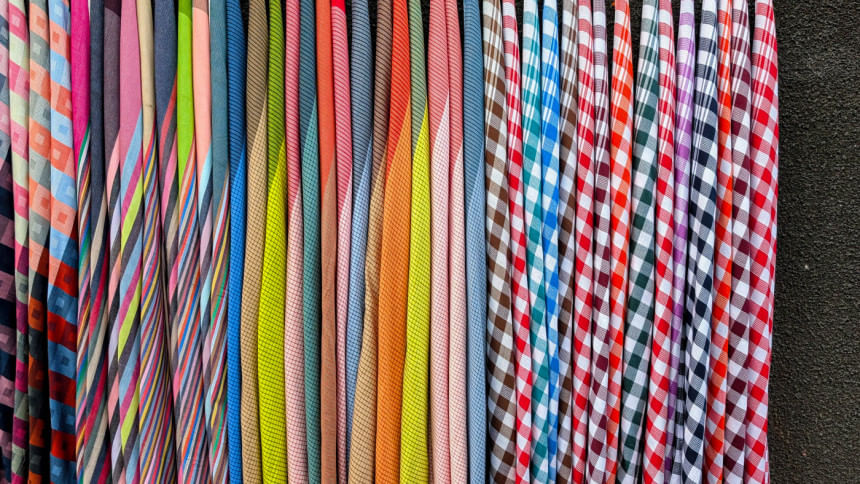
Walking through the market, one feels more than just the splash of colours. Each gamcha is a bridge between past and present, between rural looms and urban lives. They may seem like simple cotton clothes, but they carry stories of families, of generations who have made, sold, and used them in everyday life.
The gamcha market reminds us that beauty does not always come from the new, but often from what has been with us for centuries. The walls of Shyamoli, alive with gamchas, remind us of our roots, our tradition, and when displayed with heart, can brighten even the greyest corners of the city.

 For all latest news, follow The Daily Star's Google News channel.
For all latest news, follow The Daily Star's Google News channel. 




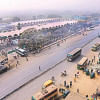


Comments